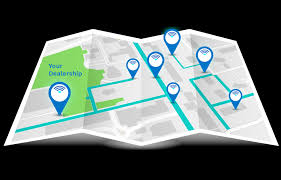Location-Based Marketing’s Next Big Thing: Geofencing
Are you sick of seeing ads that aren’t relevant on your computer or phone? So, get ready for geofencing, a technology poised to transform how we experience digital advertising by geofencing companies ultimately.

To put it simply, geofencing is the process of enclosing a specific location in a virtual perimeter using GPS technology. This barrier also called a “geofence,” can start various functions, such as sending push notifications or showing adverts to users who enter or leave the area.
How come geofencing is so crucial, though? One benefit is that it enables companies to concentrate their advertising efforts in certain regions, increasing the likelihood that potential clients will receive their message.
You might own a neighborhood coffee shop, for instance. You might set up a geofence around your business using this technology. Once a user enters it, you can notify them via push notifications of your daily discounts or new menu items. This improves their likelihood of visiting your store and gives them the impression that you are personally reaching out to them.
Geofencing also allows businesses to monitor client behavior, which is another advantage. For example, companies can gain greater insight into the preferences of their consumers by examining the data gathered through geofencing campaigns, such as when they are most likely to visit the store or the kinds of products they are most interested in.
Yet enterprises can only use geofencing. Municipalities and other organizations also use it to enhance public safety and the livability of urban areas. Geofencing, for instance, can be used to monitor sex offenders’ whereabouts and make sure they avoid sensitive locations like schools.
Geofencing is the next generation of location-based marketing because it can target and follow consumers. If you haven’t already, you should join the geofencing bandwagon.
